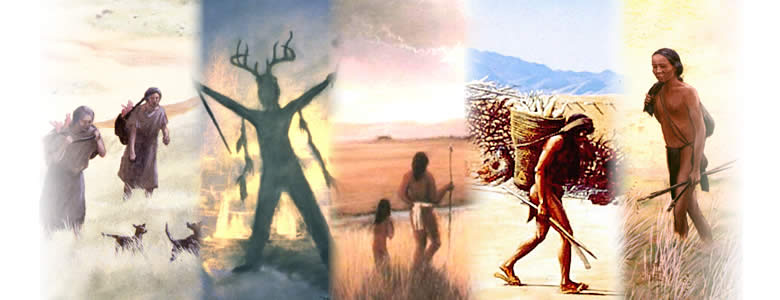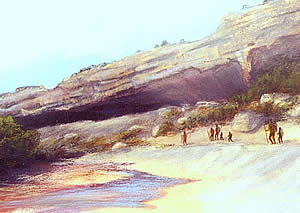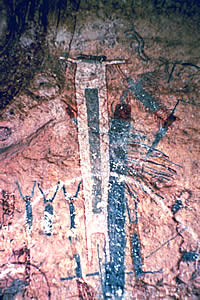
For 15,000 years or more, people have lived in the land we know today as Texas. Try to imagine how long ago that was. If we allow an average of 25 years for each generation (the period between when you were born and when you have your own children), this immense stretch of human history represents about 600 generations of "Texans!" Most of these ancient "Texans" lived in prehistoric times before early Spanish explorers and priests brought writing to the area in the early 1500s.

These ancient "Texans" were not really Texans at all. Throughout prehistory, there was no state of Texas. There was not even a United States of America. Texas the state did not come into existence until 1845. Of course, the land was here all along, but no one called it Texas or saw it as a distinct place.

Who were these peoples who lived in the same place we know today as Texas? Some were the ancestors of today's Indian tribes including the familiar ones such as the Caddo and the Karankawa. Others were the ancestors of hundreds of other groups whose names were recorded by the Spanish. Most of these groups no longer exist—their people died out due to disease, war, and massacre, or were forced to join together because of shrinking number. And the hundreds of separate groups who were encountered by the Spanish were only the tip of the prehistoric iceberg, so to speak. There must have been thousands and thousands of named groups in the ancient past whose names are lost to history. Many of the best-known Indian groups, including Comanche, Apache, and Tonkawa, arrived in Texas during early historic times.
Truthfully, we have no idea—and never will—what most of the ancient peoples called themselves. Using archeological evidence and oral histories (stories handed down from generation to generation) we can sometimes make educated guesses about where some of the ancestors of modern tribes lived, but most prehistoric peoples are known only from legend and the traces they left behind. Stones and potsherds can't speak.

Indian or Native American? We use both to mean the same thing. Most Indian people we ask prefer to be known by their tribal names such as Wichita, Caddo, or Lipan Apache. Most also prefer "Indian" instead of "Native American." Neither, of course, is really appropriate. "Indian" is the term Columbus used because he was confused about where he was (he thought he had found India). "America" was invented even later. In Canada, some people prefer the term "First Nations." So use what you like, but remember that most people would rather be known by their own name for themselves.

In Imagine It! we try to help you imagine some of the ways that ancient peoples—Indians, Native Americans, or First Nation peoples—lived. Please keep in mind that native peoples did not all do things the same way. The Caddo peoples living in the forests and valleys of East Texas had a very different way of life from the Puebloans in west Texas, or the Karankawa living along the coast, or the Apaches on the Plains. They had different ways of making a living, different foods, different houses, and so on. Multiply this by the hundreds of different groups that lived in the land we call Texas during any one period and then think about those 600+ generations!

